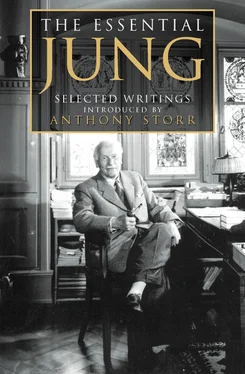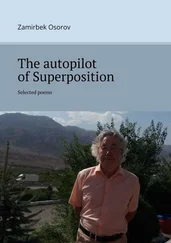The process of adaptation requires a directed conscious function characterized by inner consistency and logical coherence. Because it is directed, everything unsuitable must be excluded in order to maintain the integrity of direction. The unsuitable elements are subjected to inhibition and thereby escape attention. Now experience shows that there is only one consciously directed function of adaptation. If, for example, I have a thinking orientation I cannot at the same time orient myself by feeling, because thinking and feeling are two quite different functions. In fact, I must carefully exclude feeling if I am to satisfy the logical laws of thinking, so that the thought-process will not be disturbed by feeling. In this case I withdraw as much libido as possible from the feeling process, with the result that this function becomes relatively unconscious. Experience shows, again, that the orientation is largely habitual; accordingly the other unsuitable functions, so far as they are incompatible with the prevailing attitude, are relatively unconscious, and hence unused, untrained, and undifferentiated. Moreover, on the principle of coexistence they necessarily become associated with other contents of the unconscious, the inferior and incompatible quality of which I have already pointed out. Consequently, when these functions are activated by regression and so reach consciousness, they appear in a somewhat incompatible form, disguised and covered up with the slime of the deep.
If we remember that the stoppage of libido was due to the failure of the conscious attitude, we can now understand what valuable seeds he in the unconscious contents activated by regression. They contain the elements of that other function which was excluded by the conscious attitude and which would be capable of effectively complementing or even of replacing the inadequate conscious attitude. If thinking fails as the adapted function, because it is dealing with a situation to which one can adapt only by feeling, then the unconscious material activated by regression will contain the missing feeling function, although still in embryonic form, archaic and undeveloped. Similarly, in the opposite type, regression would activate a thinking function that would effectively compensate the inadequate feeling.
By activating an unconscious factor, regression confronts consciousness with the problem of the psyche as opposed to the problem of outward adaptation. It is natural that the conscious mind should fight against accepting the regressive contents, yet it is finally compelled by the impossibility of further progress to submit to the regressive values. In other words, regression leads to the necessity of adapting to the inner world of the psyche.
Just as adaptation to the environment may fail because of the one-sidedness of the adapted function, so adaptation to the inner world may fail because of the one-sidedness of the function in question. For instance, if the stoppage of libido was due to the failure of the thinking attitude to cope with the demands of outward adaptation, and if the unconscious feeling function is activated by regression, there is only a feeling attitude towards the inner world. This may be sufficient at first, but in the long run it will cease to be adequate, and the thinking function will have to be enlisted too, just as the reverse was necessary when dealing with the outer world. Thus a complete orientation towards the inner world becomes necessary until such time as inner adaptation is attained. Once the adaptation is achieved, progression can begin again.
The principle of progression and regression is portrayed in the myth of the whale-dragon worked out by Frobenius, as I have shown in detail in my book Symbols of Transformation (pars. 307ff.). The hero is the symbolical exponent of the movement of libido. Entry into the dragon is the regressive direction, and the journey to the East (the “night sea journey”) with its attendant events symbolizes the effort to adapt to the conditions of the psychic inner world. The complete swallowing up and disappearance of the hero in the belly of the dragon represents the complete withdrawal of interest from the outer world. The overcoming of the monster from within is the achievement of adaptation to the conditions of the inner world, and the emergence (“slipping out”) of the hero from the monster’s belly with the help of a bird, which happens at the moment of sunrise, symbolizes the recommencement of progression.
It is characteristic that the monster begins the night sea journey to the East, i.e., towards sunrise, while the hero is engulfed in its belly. This seems to me to indicate that regression is not necessarily a retrograde step in the sense of a backwards development or degeneration, but rather represents a necessary phase of development. The individual is, however, not consciously aware that he is developing; he feels himself to be in a compulsive situation that resembles an early infantile state or even an embryonic condition within the womb. It is only if he remains stuck in this condition that we can speak of involution or degeneration.
* It might be objected that dementia praecox is characterized not only by the introversion of sexual libido but also by a regression to the infantile level, and that this constitutes the difference between the anchorite and the schizophrenic. This is certainly correct, but it would still have to be proved that in dementia praecox it is regularly and exclusively the erotic interest which goes into a regression. It seems to me rather difficult to prove this, because erotic interest would then have to be understood as the “Eros” of the old philosophers. But that can hardly be meant. I know cases of dementia praecox where all regard for self-preservation disappears, but not the very lively erotic interests.
* Somewhat after the manner of Hudibras, whose opinion is quoted by Kant (Träume eines Geistersehers, III): “When a hypochondriacal wind is roaring in the bowels, everything depends on the direction it takes. If it goes downwards, it turns into a fart, but if it mounts upwards, it is a vision or a divine inspiration.”
* Though professional satiety with neurotic unrealities makes the analyst sceptical, a generalized judgment from the pathological angle has the disadvantage of being always biased.
Part 3. The Development of the Idea of the Collective Unconscious and of Archetypes
Jung’s deep involvement with schizophrenic patients and his endeavour to understand their psychology led him to conclude that their fantasies and delusional systems could not be explained in terms of their personal biographies.
From “Recent Thoughts on Schizophrenia” CW 3, par. 549
But unlike the contents of a neurosis, which can be satisfactorily explained by biographical data, psychotic contents show peculiarities that defy reduction to individual determinants, just as there are dreams where the symbols cannot be properly explained with the aid of personal data. By this I mean that neurotic contents can be compared with those of normal complexes, whereas psychotic contents, especially in paranoid cases, show close analogies with the type of dream that the primitive aptly calls a “big dream.” Unlike ordinary dreams, such a dream is highly impressive, numinous, and its imagery frequently makes use of motifs analogous to or even identical with those of mythology. I call these structures archetypes because they function in a way similar to instinctual patterns of behaviour. Moreover, most of them can be found everywhere and at all times. They occur in the folklore of primitive races, in Greek, Egyptian, and ancient Mexican myths, as well as in the dreams, visions, and delusions of modern individuals entirely ignorant of all such traditions.
Читать дальше












